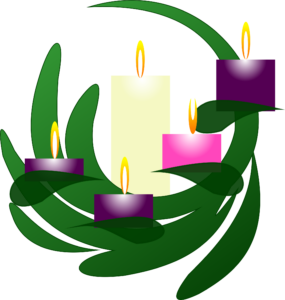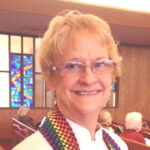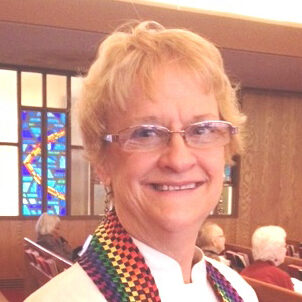Hanging of the Greens: Their Origin and Meaning
Excerpts from an article by Tracy L. Meyers

The Hanging of the Greens occurs annually at the start of Advent* and is a multisensory communal event. . . .
ADVENT = a time of preparation for Christmas and preparing ourselves for a new year living in the presence of God through our relationship with his son. . . . In the mid-17th century, Christmas celebrations apparently got a little too rowdy and a bit too merry. The English parliament restricted religious singing to the Psalms. Churches were stripped of ornamentation and organs were removed. It took nearly two centuries for Christmas to recover its sparkle. Today, churches combine music with the festival of the Hanging of the greens, to help keep alive the deeper meaning of Christmas. . . .
EVERGREENS: Evergreens have long been symbolic of life and growth. . . . The early Christians decked their sanctuary with the boughs of evergreen as a promise of the new life and as a sign of the hope that in Christ all live forever. . . .
BELLS: . . . The cup-shaped bell, familiar to us, dates from the 4th century. Bells were originally used to summon the Christian to worship. Bells have always been closely associated with religious services. The ringing of the bells and towers of chimes brings a joyous sound of good tidings. . . .
TREE: Christmas trees have long been a part of American tradition. Colonial trees were decorated with seeds, pods, and strung cranberries with tiny candles fastened to the limbs. The Christmas tree’s beginning is buried in various legends coming from different countries and connected with ancient peoples and with pagan religions. The Egyptians took green date palms into their homes during their winter solstice rites signifying life triumphant over death. The Romans trimmed trees with trinkets and small masks and sometimes placed 12 candles on a tree with an image of the sun god. The druids of Northern Europe honored their chief god, Odin, by tying gilded apples to tree branches. When pagans accepted Christianity some of their winter rites continued, but the symbolism was changed to honor Christ. Today the evergreen Christmas tree symbolizes everlasting life; its spire points upward reminding people of God. . . .
MISTLETOE: The mistletoe has become for us a sign of merriment and romance, but in ancient times it was a symbol of peace. It was said that when enemies met under it, they discarded their arms and declared a truce. Thus, it became a custom of Christians to place a spray of mistletoe on the altar at Christmas time as a reminder of the peace of God and the power of Christ to heal the hurts of the body and soul. As the mistletoe is brought in and placed on the Altar, church members sing It Came Upon a Midnight Clear.1
LIGHTING OF THE CANDLES: Candles are the reminders of Jesus Christ as the light of the world. As His light shines in the darkness it brings light into those who follow him. this light of Christ is spread outward as each Christian uses their life, love and faith to express Christ’s light to the world. . . .
CRECHE: A great number of traditions from many lands have been brought to our own country and have become a very familiar part of our American Christmas. Yet we can become so involved in the festive trim, décor and activities of the Christmas season that we can, if we are not careful, forget the real meaning and reason for Christmas. It must have seemed something of the same way to a familiar monk, St. Francis, in the Middle Ages. In those days most people could not read and there were very few books. Church ceremonies were in Latin and worshipers did not understand all that was going on. St Francis popularized the reenactment of the birth of the Christ Child in a simple manger scene at the little town of Greccio, Italy in 1224, although the custom, known by the Latin name Praesepio meaning “stable,” may have originated as early as the 8th century. A few years before his death, Francis had seen shepherds sleeping in the fields near Greccio and this gave him the inspiration for depicting a life-size nativity so that everyone could understand the Christmas story. Tradition tells us that this took place in a cave on the hill above Greccio. Real persons playing the part of Mary, Joseph and the shepherds were accompanied by live oxen and donkeys. After the plays, the actors strolled down the street singing and thus caroling was born. News spread rapidly through town and countryside, and crowds of worshipers gathered for the reenactments. This was repeated year after year and soon spread to other countries. . . .
1 — In bygone years, Christians beneath the mistletoe in the church gave each other the kiss of peace and reconciliation.


